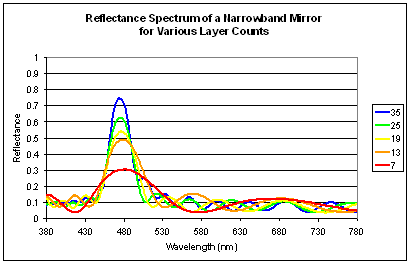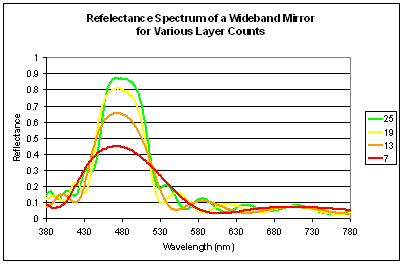559b Demonstration of Continuous Refractive Index Control of a Nanocomposite
Optically clear, mechanically flexible nanocomposites are created by doping host polymers with nanoparticles having higher or lower refractive indices. The composite materials preserve the viscoelastic properties of the binding polymers and exhibit infinite tunability between the refractive index limits of the system. These properties provide unique benefits for multi-layer thin film optical filters. Additionally, the nanoparticles are dispersed in a fluid or bound in a polymer matrix in use, thus reducing toxic risks that may be associated with raw particles. A simple and safe method of producing highly engineerable optical filters is presented.
By doping a polymer with metal oxide nanoparticles, an engineer can manipulate the refractive index of a thin film while maintaining mechanical flexibility and high transparency to visible light. In this work, we showed that nanocomposites of UV curable monomers and metal oxide nanoparticles and can be used in thin film systems of varying refractive index. On polymer substrates, the nanocomposite filter stacks have outperformed traditional vacuum deposited films at large strains. Several thin film filters for the visible and near-IR regions were constructed using up to 30 layers. The finished stacks exhibited spectral haze of less than 1 percent. These studies indicate that nanocomposites behave as expected optically and maintain the flexibility of the host polymer.
Using a stable dispersion of titanium dioxide nanoparticles and a UV curable monomer, we were able to design and produce several quarter wave filters that demonstrate control of the position and size of the stop band through adjustment of the organic/inorganic ratio. The volume loading of the metal oxides can be adjusted from zero to near the theoretical packing density of spheres, allowing refractive index to be controlled over a large range. Here we demonstrate the abilities of nanocomposites to control filter response through their engineerable refractive indices. With layer counts exceeding 30 (more than twice the layer count of our previous efforts), very little haze is observed. Three formulations of titanium dioxide and UV curable monomers were prepared to produce the following characteristics in the finished films: (1) 1.65 refractive index with a thickness of 73 nm (2) 1.75 refractive index with a thickness of 69 nm (3) 1.85 refractive index with a thickness of 65 nm.
Two pairings of these materials were tested with increasing layer counts. The resulting reflectance spectra are shown in figures 1 and 2. The filters were designed to peak near 480 nm with their widths and heights controlled by the ratio of the refractive indices of the layers and the layer count. The measured results of the final films closely resemble their theoretical models. The goal of this work was to show the capabilities of this simple process in building multilayer thin films that are both optically and mechanically flexible.

